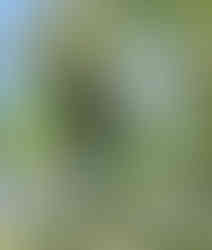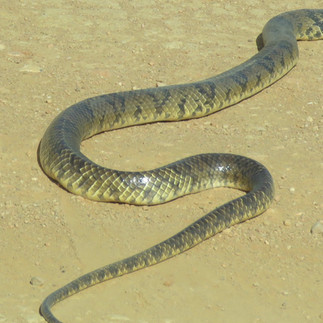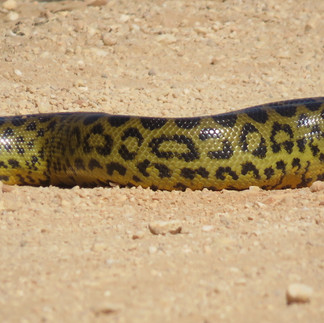Majestic Jabirus and Clumsy Cormorants
- jrycenga
- Aug 18, 2022
- 5 min read
July 20-21, Chapter Seven

The Pantanal region is vast, and from what we could tell, well-protected. There is one extensive road that covers it in Mato Grosso State, from Poconé to Porto Jofre. This chapter speaks of that length, of the many bridges contained therein, and of the multitudinous birds and reptiles it contains. For orientation, here's my iNaturalist map from July 21st, when we traveled from our first lodge in the Pantanal - Aymara - to our southernmost destination in the region, Porto Jofre. Poconé is just north of where my pushpins start.

As I mentioned before, I really enjoyed Aymara Lodge. Part of the reason was the grounds themselves - a long entrance road with varied habitats, and some trails that began near our rooms. There was also a bird-and-mammal feeder station set up right outside the dining area, giving us excellent looks at the animals, their behaviors, and their interactions.

We were awoken by our noisy neighbors, nesting Hyacinth Macaws, on the morning of July 20th. But the birds that stole the show early were woodpeckers: Crimson-crested Woodpecker (Campephilus melanoleucos) and Pale-crested Woodpecker (Celeus lugubris). The cute and hyper-active Thrush-like Wren (Campylorhynchus turdinus) finally posed for a photo.
The Pale-legged Hornero (Furnarius leucopus) is a common species in the Pantanal, with quite vivid cinnamon tones. It would hang around pond edges. Another denizen of the ponds was the handsome Black-backed Water Tyrant (Fluvicola albiventer), whose behavior is reminiscent of a Black Phoebe. Another bird worming its way into my heart here was the nearly tame Bare-faced Currasow (Crax fasciolata), here seen leading a father and son along the road/trail.
In the afternoon, we had our best views of the huge, majestic, yet also goofy wading bird of them all, the Jabiru (Jabiru mycteria). It moves slowly, working through the water with a studied deliberateness. Also nearby were some old friends from Florida: Limpkin (Aramus guarauna), Roseate Spoonbill (Platalea ajaja) and Crested Caracara (Caracara plancus).
On this same jaunt we also encountered one of the most clumsy animals I've ever seen in the wild. The cormorant in this area is the Neotropic Cormorant (Nannopterum brasilianum) , a species that is drifting further and further north into North America. What happened with this individual, though, was unique. I think Rich was trying to get some rarer bird into view, but I had started paying attention to this bird because he seemed eager to perch in a photogenic position:

Regrettably, he took this tendency a bit too far. He flew into a tree - and I mean INTO a tree. With a thud, he hit a major branch and plummeted to the ground below. I was worried he might have killed himself, but a few minutes later (despite our laughter) he had recovered. We all admired his pluck, but think about it. Birds don't fly into objects. We've all watched thousands upon thousands of birds perform all sorts of aerial acrobats, but this cormorant had "enormous difficulty in the comparatively simple act of perchin'." Perhaps he really is a sheep.
I am unjustly neglecting the mammals, which were as good here as anywhere on our trip. Capybara were plentiful, the Azara's Agouti (Dasyprocta azarae) and South American Coati (Nasua nasua) ate at the feeders, and monkeys were frequently seen or heard on the trails. The best monkeys were the Howler Monkeys; the picture below is of the Black-and-gold Howler Monkey (Alouatta caraya). The sounds the Howler Monkeys make are surreal - when heard at a distance. Close up they are among the loudest terrestrial mammals on earth! My tapes, found here, are not particularly good, but listen for the eerie swelling, like part of the soundtrack to a deep space film! For more on the Black-and-gold Howler Monkey, check out this account and for the sound close-up, here's a link to the Houston Zoo. Like the White-winged Tanagers, the Howler Monkeys were acoustically and musically impressive, and affected me at a deep emotional/aesthetic level.
Below - Black-and-gold Howler Monkey; Capybara; South American Coati
Oh, I am leaving out some more mammals - us! This is a cool group shot from atop a night-time exploration van:

Front row: Peggy, me, Rich
Middle row: David, Frank, Anne
Back row: Jan, Margaret, Jean
On the morning of the 21st, we birded the grounds at Aymara, and had some wonderful species, including the Helmeted Manakin (Antilophia galeata), the Red-billed Scythebill (Campylorhamphus trochilirostris), and the Great Rufous Woodcreeper (Xiphocolaptes major). As usual, though, it was a diminutive woodpecker that captured my heart - and it is even named Little Woodpecker (Dryobates passerinus).
Top Row: Helmeted Manakin; Red-billed Scythebill; the moon as of July 21, 2022
Bottom Row: Great Rufous Woodcreeper; Little Woodpecker

Once we left the grounds at Aymara, we were on the road - the road of many bridges. The Pantanal is a continuous wetland area, even in the winter dry season: there's water everywhere! The bridges were numbered - the numbers reach well over 100! (Ponte = Bridge)
Because this is a gravel road, with frequent bridges over open water, the nature-viewing is spectacular, even in a closed van like ours. Snakes loved to sun themselves on the road (a danger to them, of course), and Rich's inborn love of herps meant we got to spend considerable time with them when they were seen. This day we saw an endangered snake, the False Water Cobra (1st picture, Hydrodynastes gigas); it was injured from an auto strike, but able to move on its own. It was a large snake, which made Rich angry about its being hit by a vehicle - any car or truck driving at a proper speed on this road should have been able to see the snake and avoid it. The more mustard-colored snake with leopard spots is the Yellow Anaconda (Eunectes notaeus) - a most impressive and beautiful large snake. We coaxed both of these serpents off the road.
For lunch we stopped at a tourist-style hotel around the halfway point, located on a wide tributary of the Cuiabá River. Here we met the classy cowbird, the Grayish Baywing (Agelaioides badius), and took our pictures in proper touristic style.

There were the occasional misspellings in translation...
And Narrow Stingeless Bees (Tetragonisca angustula) building their own residence.

Back on the road, we saw more mammals - some wild, some driven. Mato Grosso is one of the rural states of Brazil, and has a "cowboy" feel at times.
Cattle rustling on the road; Marsh Deer (Blastocerus dichotomus); "with a power greater than the wind" (I think)

Rich knew all the secret spots along the road - the place where there were nesting Great Horned Owls (Bubo virginianus), for instance - and knew how to time it so that we would arrive at our Porto Jofre eco-lodge (a converted old fishing lodge) at twilight. This included the drive over the "Bridge with a Defect" (not a comforting sign...), our first encounter with the large ill-tempered duck named the Southern Screamer (Chauna torquata), the gorgeous Plumbeous Ibis (Theristicus caerulescens), a Short-crested Flycatcher (Myiarchus ferox) that had captured a most unusual insect, a Neotropical Stick Grasshopper (Proscopiidae) that was especially appreciated by the Brazil iNatters, and a White-rumped Mojita (Xolmis velatus) amidst a towering number of towering ant mounds!
Tomorrow is the day for the Big Cat...stay tuned!
Date | iNaturalist | Life Birds | Year Birds | S. America | Brazil |
July 20, 2022 | 33/304 (2039) | 687 | 648 | 407 | |
July 21, 2022 | 15/319 (2054) | 707 | 670 | 429 |










































































Comments